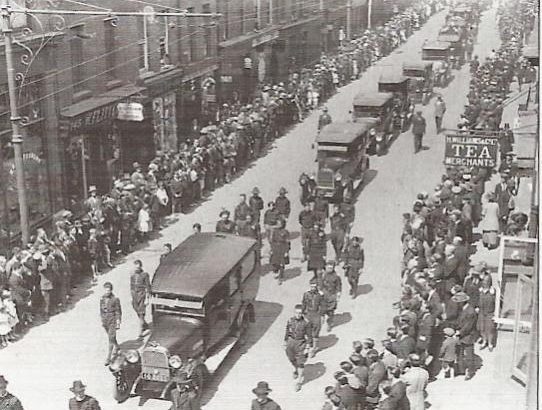Markievicz: A Most Outrageous Rebel
by Lindie Naughton (Merrion Press, €19.99 pb / €65hb )
This is a comprehensive account of the many lives of Constance Gore-Booth also known as Countess Markievicz, the defiant aristocratic hero of the poor of Dublin.
She was born in London on February 4, 1868. Her father Sir Henry Gore-Booth of Lissadell, Co Sligo, was an Anglo-Irish landlord. She and her two sisters were educated in their home and had a social life which reflected their class.
The potato harvest failed in 1879. As elsewhere, the tenants on the Lissadell estate faced starvation. As conscientious landlords the Gore-Booths were actively involved in the distribution of relief. Constance’s mother set up a food distribution centre at Lissadell.
Her father delivered assistance to the impoverished and semi-starving tenants in their hovels. In so doing he was accompanied by his daughters. The experience caused them to have a life-long concern for the poor and to be committed to working for social justice and equality.
Art
Constance went to Paris to study art in 1898. There she met Count Casimir Markievicz, a Pole, whose family held land in the Ukraine. He was a painter of some merit and they married in 1900. Together they organised exhibitions of their paintings and were involved in drama productions wherein they frequently featured in the casts.
Back in Ireland in 1908, Constance joined Sinn Féin and helped to found Bean na hÉireann, the first women’s nationalist journal, in which she was an influential advocate for women’s suffrage.
With Bulmer Hobson she co-founded Fianna Éireann (the Republican Boy Scouts) in 1909. A supporter of the striking workers during the lock-out of 1913, she organised soup kitchens in the Dublin slums and at Liberty Hall. She was actively involved in the military training of the Irish Citizen Army and Na Fianna in 1914.
As second in command to Michael Mallin, she was with the insurgents in St Stephen’s Green and the College of Surgeons during Easter week 1916.
Surrender
Following the surrender she was condemned to death for her part in the rebellion but this was commuted to a life sentence, because of her sex.
On her release from prison in 1917, Constance re-doubled her support for Sinn Féin and in the interests of the party was elected to Westminster in 1918.
Like the other Sinn Féin MP’s she refused to take her seat in the House of Commons. She was appointed minister for labour in the first Dáil Éireann in 1919. She conducted her ministry, while ‘on the run’ throughout the War of Independence in 1919-1921.
Constance opposed the Anglo-Irish Treaty of December 1921. Re-elected president of Cumann Na mBan and chief of Fianna Éireann in 1922, she strongly influenced those organisations to oppose the Treaty.
Civil war
The outbreak of the Civil War saw her once again ‘on the run’. She was elected to the Dáil for Dublin South in August 1923, but refused to take the oath of allegiance to the king, and like the other elected republicans / members of Sinn Féin was disqualified from sitting in Dáil Éireann.
Realising that it was pointless to continue boycotting Dáil Éireann, she left Sinn Féin and joined the newly established Fianna Fáil Party in 1926. She was elected to the Dáil in the Fianna Fáil interest in June 1927, but died soon afterwards on 17 July.
Socialite, artist, writer, feminist with impeccable credentials (first woman to be elected to House of Commons, first woman to serve in an Irish cabinet), patriot, revered icon of republicanism but above all an outrageous rebel, Constance Markievicz was a most controversial figure.
Yet in this fine biography Lindie Naughton succeeds in exploring her many lives in an exemplary balanced and sensitive manner.


 Funeral of Countess Markievicz
Funeral of Countess Markievicz 